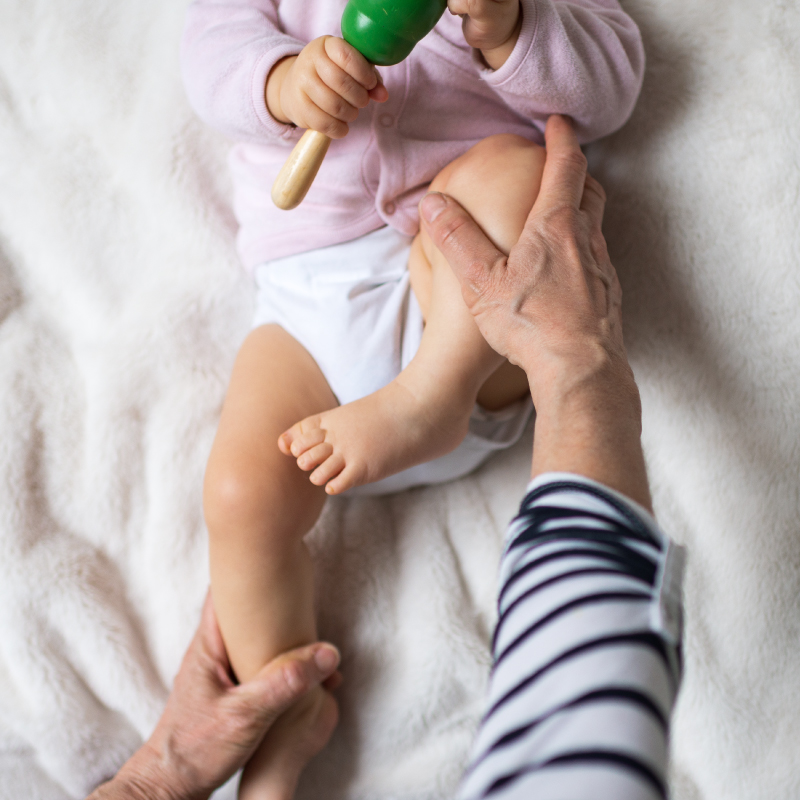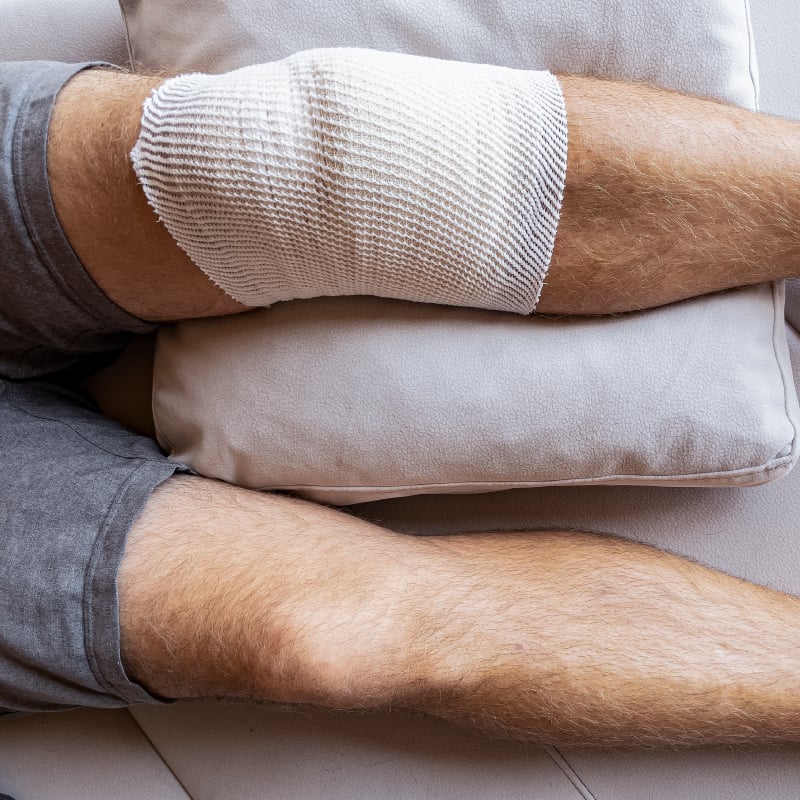Whether that’s a lack of balance, a strange movement in their legs, or a noticed difference in how their toes point; noticing that your child walks differently can be nerve-racking.
Children are often referred to a pediatric orthopaedic surgeon out of concern due to a perceived abnormality in their walking.
“In many cases, perceived gait abnormalities are variations of normal walking that will evolve to a mature pattern as a child grows," said pediatric orthopaedic surgeon James Engels, MD.
"However, it’s important to have a specialist assess any child with gait abnormalities to determine if there is any cause for concern,"
When do babies start walking?
While every baby is different, the average age for babies to start walking is around 12 months. Some take their first steps much earlier, and some take a bit longer to start toddling.
In general, normal motor milestones for children include:
- Around 6-8 months, most babies can sit without support and roll over
- Around 9-11 months, most babies learn to crawl
- Around 10-12 months, most babies can pull themselves up to standing by holding onto furniture. Many can walk with support, but not on their own.
- Around 14-16 months, most babies will start to walk without support.
- By 2 years, toddlers can usually go upstairs one at a time
- By 3 years, most children can go upstairs reciprocally
- By 4 years, most children can go downstairs reciprocally
Abnormal gait patterns in children
The most common abnormal walking patterns are inward-pointing toes, outward-pointing toes, tripping, or balance and coordination issues.
Dr. Engels provides a list of reasons why your child may have gait abnormalities or appear to be walking funny.
Structural gait abnormalities
Tibial torsion
There are two versions of tibial torsion—internal and external. With internal tibial torsion, the child’s lower leg turns inward. With external tibial torsion, their lower leg turns outward. In most cases, this condition improves without treatment before the child turns four.
Although uncommon, some children with this condition are prescribed a night brace to wear, usually at 18-30 months old. In rare cases, an orthopaedic surgeon will consider surgery if a child still has the condition with significant walking problems when they’re 8 to 10 years old.
Femoral version
Femoral version is when a child’s upper leg bone twists inwards or outwards. Similar to tibial torsion, the upper leg bone can twist inward (femoral anteversion) or outward (femoral retroversion). Signs of this condition become noticeable between 2 to 4 years of age. In some cases, femoral retroversion can cause a delay in a child’s walking.
Bowlegs and knock knees
Bowlegs are an outward curve of the legs at the knees, while knock knees are the inward curve. Both conditions are common in early childhood and usually improve naturally as a child grows.
Flatfeet
Flatfeet is when the arches in the feet have not yet developed and the entire foot presses against the floor when walking. This gait abnormality is normal in infants and young children and usually improves within the first 10 years of life.
Metatarsus Adductus
This positional deformity causes a child’s foot to bend inward from the middle foot to the toes. Although the condition tends to improve on its own, babies with severe metatarsus may need treatment, including special exercises, casts, or corrective shoes.
Movement-based gait abnormalities
Movement-based abnormalities are those that affect the act of walking. These gait abnormalities are often related to issues with signals from the brain to the legs that work to generate movement.
Toe walking
Toe walking is common among children who are just starting to walk and usually self-corrects. However, a child should be evaluated if they initially demonstrate normal walking patterns but later start walking on their toes.
Tripping or falling
Most children younger than four commonly trip and fall when they walk and run. This disappears by the age of six to seven years, at which age the gait pattern usually matures.
Balance or coordination issues
In many cases, a child doesn’t often fall but they exhibit poor balance and tend to walk unevenly. Some parents describe that their child walks like they’re “drunk.” This type of abnormality is very rare but requires further consultation with other pediatric specialists, such as a pediatric neurologist.
Diagnosing gait abnormalities
Often a diagnosis is made in the office during a physical examination and rarely requires imaging, modalities, or studies. Occasionally, however, imaging may be needed to further clarify the nature of the walking pattern.
Treating gait abnormalities
The majority of gait abnormalities don’t require treatment as they are often variations of normal walking patterns. However, if your child does require treatment, a pediatric orthopaedic surgeon will work with you to develop a treatment plan that best suits your child’s needs and guide you through the process.








